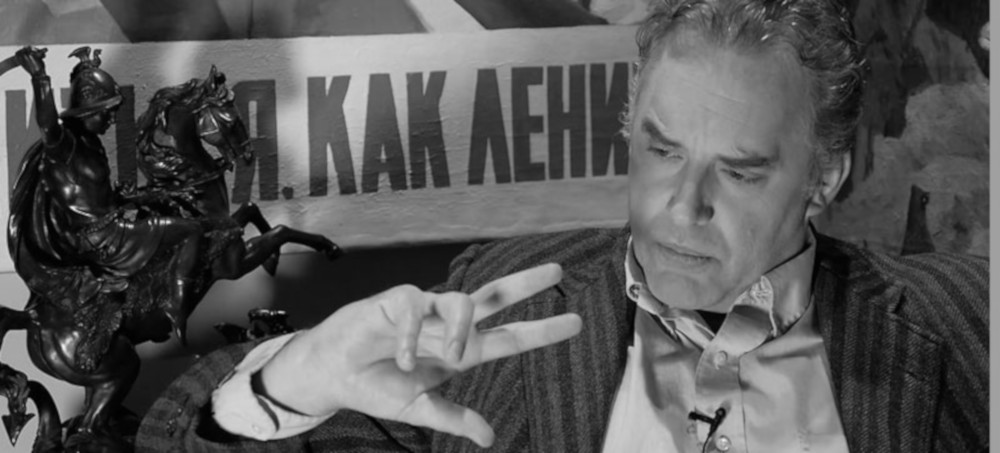Jordan Peterson and Platonic Realism
As Jordan Peterson rose to popularity a few years ago, I noticed a corresponding rise in people talking about symbolism, archetype, and meaning. Peterson frequently talks about these issues in a way that appeals deeply to thinking Christians and especially Christian Platonists like myself. In important ways, however, the approach Peterson takes, based on Carl Jung, differs dramatically from Platonic realism. While I may be competent to give a brief outline of what I mean by Platonic realism, I consider myself very much a student in the realm of Jungian archetypes. If anyone can set me straight, please do so. I’ll do my best, however, to articulate an important bridge that I see between the Jungian understanding and the Platonic, while cautioning against an important contrast.
People often explain Platonic forms as ideal objects existing in some sort of heaven. For example, the “Form of Tree” would be an ideal Tree up there in some other world. This common reading, however, is a mistake. Instead, the Forms are simply intelligible structures or patterns that we see showing up in the world over and over again in their instances. For example, the Form of “the Beautiful” is simply the structure or pattern that is to be found in all beautiful things. It is the presence of this very pattern that makes them beautiful. Hence, Platonists will say that individual beautiful things are beautiful because they “participate” (μετέχειν) in the Beautiful. We could simply call it “Beauty,” or more fully, “the essence of what it means for anything to be beautiful,” although this shift in language tends to reify the Forms in an unhelpful way.
Now, a few important features that Forms such as the Beautiful possess: (i) they are “transcendent” (χωρίς = “apart” or “separate”) because they exist whether or not any particular beautiful sunset or symphony exists. (ii) They are “eternal” because the pattern revealed by every beautiful particular is what it is regardless of what day it is. The Beautiful itself does not pass away when the sunset fades or when the painting finally crumbles to dust. Hence, Platonists frequently contrast “Being” with “Becoming.” The former encompasses the stable, timeless patterns, while the latter encompasses all the things that participate in these patterns because the participants come to be and pass away in time. (iii) They are “intelligible” (νοητός) because they are the kind of thing that we can grasp only with the intellect (νοῦς) rather than the physical senses. We do not physically see the Beautiful itself with our eyes. We physically see the light coming to us from the sunset. Nevertheless, we do “see” Beauty in a deeper sense during this experience. Beyond our retinas, we possess a mind capable of grasping, intuiting, or comprehending the pattern embodied by the sunset. Hence, we say that the pattern itself is an “intelligible” rather than a “visible” aspect of the sunset.
At this point, we can notice several important connections between the Platonic view that I just described and the Jungian understanding of archetypes that we frequently hear in Jordan Peterson. Most obviously, Jungian archetypes are patterns that we intuit in our experiences rather than the empirical contents of the experiences themselves. Next, we can see that these patterns are the elements that give our experiences meaning, drawing them up into a whole cosmos stretching beyond the fading moment. Finally, Jungian archetypes go beyond our personal, subjective response in a way similar—though not identical—to the way that Platonic Forms do.
I want to focus on this last point of contact because we can also see here the most important element of divergence between the two theories. Because the archetypes for Jung emerge from the collective unconscious, I cannot simply decide to conceive of the Anima Archetype, for example, in a different way. Nor do we arrive at this archetype by convention or cultural practice. Instead, the archetypes are hard-wired into our psychology and belong to all of us just by being members of the human species. This is why it is unfair to call Jung or Peterson a “subjectivist” in the usual sense of that term. Similarly, in Platonism, we are endowed with the capacity to recognize the presence of intelligible patterns in the world just by being rational, noetic beings.
At just this point, however, a major divide opens up between Plato and Jung. The ontological grounding for the Forms comes from outside the subject, whereas the grounding for Jungian archetypes emerges from within our subjectivity—albeit not our individual subjectivity.
Peterson frequently makes it clear that the archetypes we experience in life and see revealed in the symbols of myth have everything to do with the details of the way human beings happened to have evolved, a process that could have come out quite differently. For the Platonist, however, the Forms that we come to recognize were there the whole time in the objective world before we came along and recognized them.
Peterson sometimes seems to start hinting in this direction. He refers to “nature” or “being” as “that which selects” in the process of natural selection. It’s not as though the universe is entirely without structure before humans evolve a psychology capable of projecting meaningful structure onto it. Instead, the universe must be structured in very definite ways in order for some mutations to achieve greater fitness than others. I can imagine, therefore, a rapprochement between Peterson and Plato along these lines. But I must confess that after listing to many, many lectures from Peterson and listening quite carefully on this score, he never quite takes the explicit steps that I wish he would.
